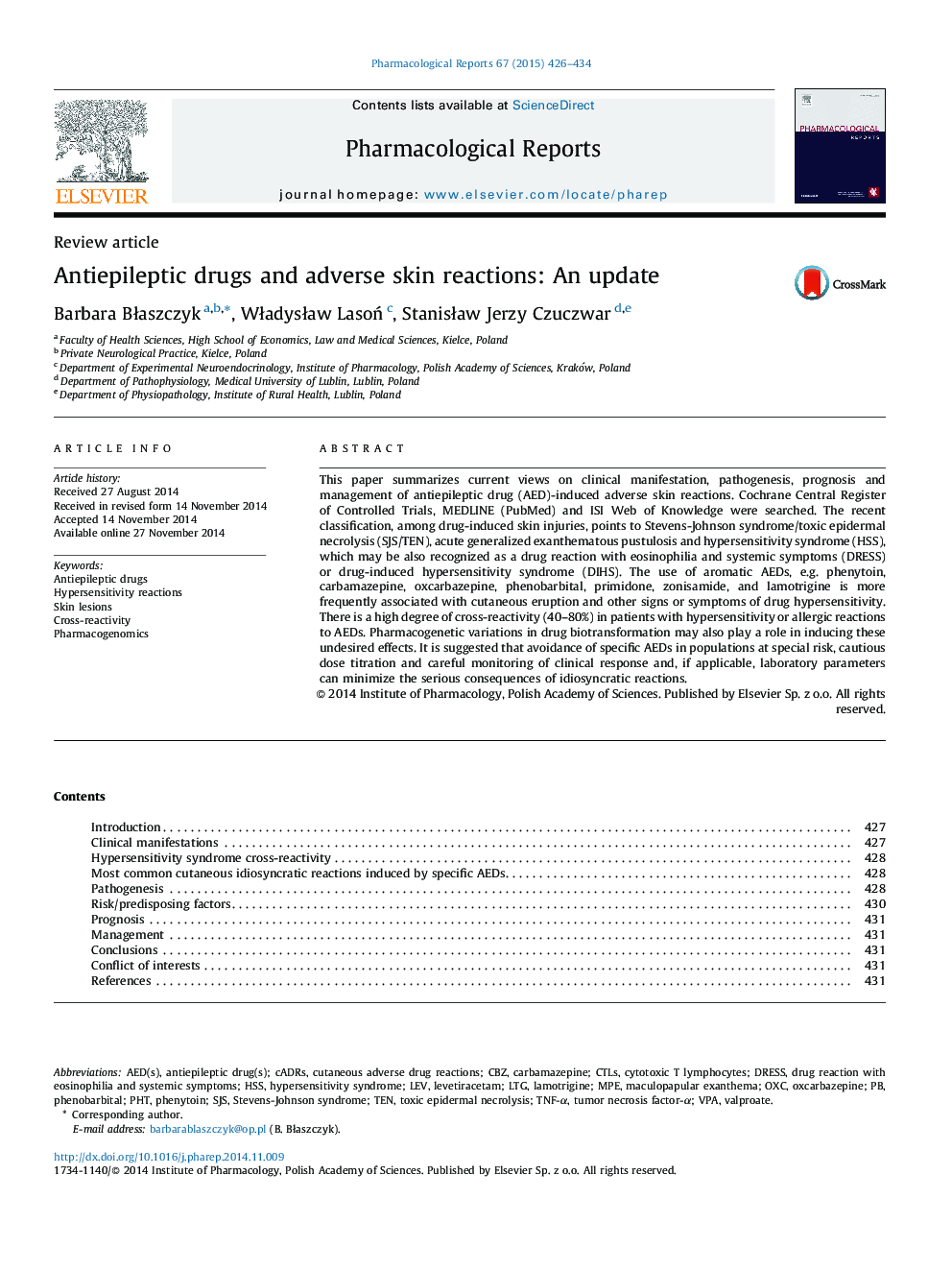| کد مقاله | کد نشریه | سال انتشار | مقاله انگلیسی | نسخه تمام متن |
|---|---|---|---|---|
| 2011877 | 1067018 | 2015 | 9 صفحه PDF | دانلود رایگان |
This paper summarizes current views on clinical manifestation, pathogenesis, prognosis and management of antiepileptic drug (AED)-induced adverse skin reactions. Cochrane Central Register of Controlled Trials, MEDLINE (PubMed) and ISI Web of Knowledge were searched. The recent classification, among drug-induced skin injuries, points to Stevens-Johnson syndrome/toxic epidermal necrolysis (SJS/TEN), acute generalized exanthematous pustulosis and hypersensitivity syndrome (HSS), which may be also recognized as a drug reaction with eosinophilia and systemic symptoms (DRESS) or drug-induced hypersensitivity syndrome (DIHS). The use of aromatic AEDs, e.g. phenytoin, carbamazepine, oxcarbazepine, phenobarbital, primidone, zonisamide, and lamotrigine is more frequently associated with cutaneous eruption and other signs or symptoms of drug hypersensitivity. There is a high degree of cross-reactivity (40–80%) in patients with hypersensitivity or allergic reactions to AEDs. Pharmacogenetic variations in drug biotransformation may also play a role in inducing these undesired effects. It is suggested that avoidance of specific AEDs in populations at special risk, cautious dose titration and careful monitoring of clinical response and, if applicable, laboratory parameters can minimize the serious consequences of idiosyncratic reactions.
Journal: Pharmacological Reports - Volume 67, Issue 3, June 2015, Pages 426–434
